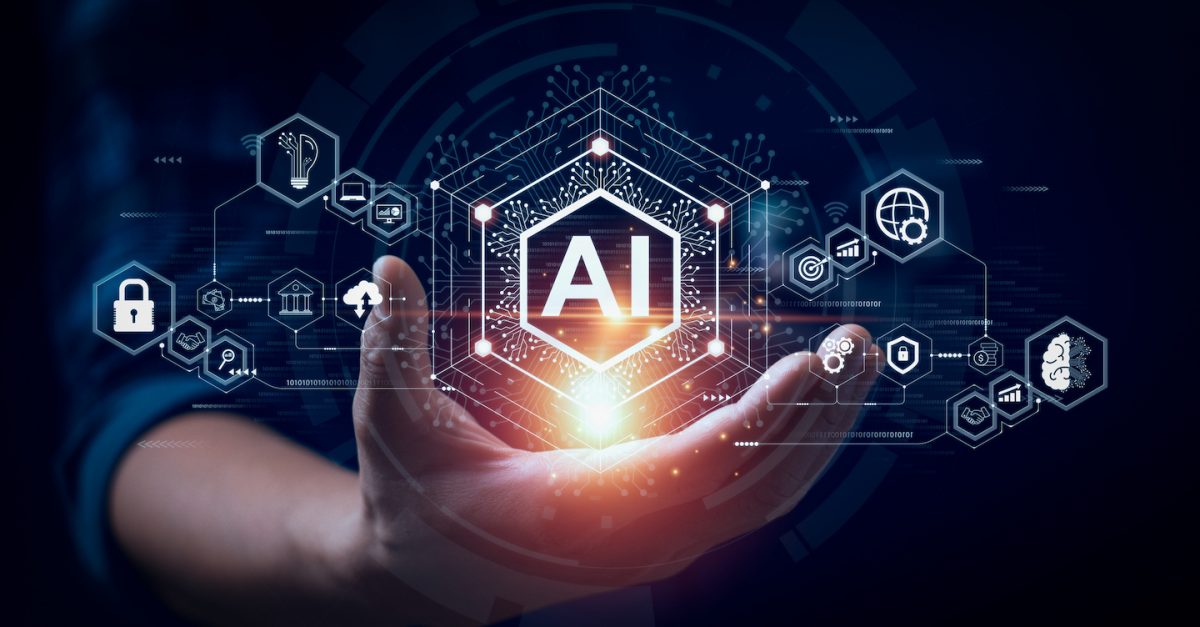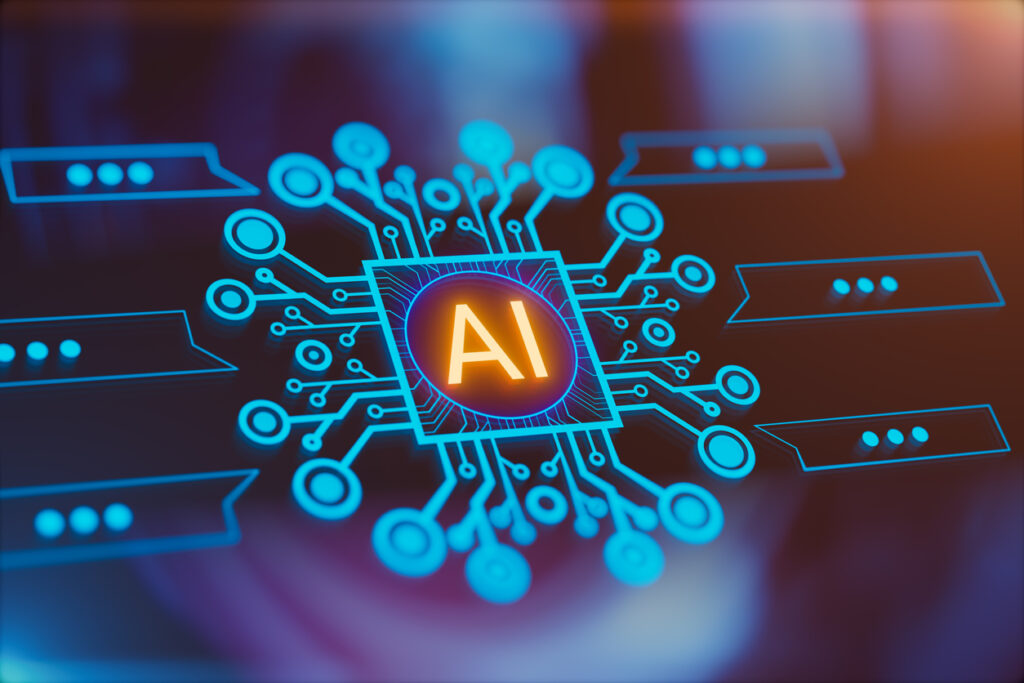By Jim Durkin, Founding Partner
It seems everywhere you look these days, experts are weighing in on the impact artificial intelligence will have on industries far and wide. In fact, my colleagues recently offered an in-depth look at how AI is poised to impact the market research discipline.
Some embrace the advent and evolution of AI in their industries with enthusiasm and anticipation. Others eschew it with fear and anxiety. Whether it’s actors and writers striking, at least in part to protect their livelihoods from AI, or attorneys battling the “robots” out in courtrooms, there is no shortage of conversation around both the promise and peril of artificial intelligence.
As a market research firm, we are seeing more and more clients wanting to understand exactly how AI is impacting a given market or industry sector — and to get a better handle on how that will change in the near and distant future.
Here is what we’re hearing and learning, both through direct conversations with company leadership teams as well as via secondary research and information gathering.
AI Is Just About Everywhere, and Likely Going Nowhere
Bluwave, a resource we often leverage in our work with private equity firms, notes that “Almost every industry will see an effect from AI in the future” in its Q2 2023 BluWave Insights Report:
- Non-tech sectors, such as retail and manufacturing, are particularly well-positioned to invest in new technological capacities. The expected rise in IT spending over the next three years, 2.5 times higher than pre-pandemic levels, indicates an acceleration in the adoption of new technology, supporting a productivity rebound.
- Given that new technologies generally take about 10 years to reach critical mass, the AI impact is right around the corner. The adoption speed has been increasing over time, and the AI revolution might be faster than we witnessed during the PC revolution.
- Symbolic consumption, (related to group membership, personal values, interests, status or style) which requires unique/customized products, will not be as impacted as consumption that is motivated by more practical/basic needs, such as buying a glass container simply to store food.
- The shift toward less global supply chains and more reshoring and reliance on regional players due to political tensions, pandemic impacts and energy security concerns only adds to the labor market challenge. This new environment pushes companies to find cost-effective and more productive alternatives.
As noted above, if the typical adoption cycle for new technologies is only 10 years, and the rate of adoption is now accelerating even more quickly than during the personal computer revolution, industries sector-wide are nearing — or at — a critical inflection point. Whether being met with optimism, skepticism or pessimism, the fact of the matter is this: The age of AI is already here, and it’s likely not going anywhere anytime soon.
In our observations to date, many of the industries we work in day-to-day are likely to be impacted by advancements in AI, be it modestly or greatly. For almost every vertical, it is safe to say that AI will have some impact, most of them likely to experience high impact. What may be in question from industry to industry is not so much if, but rather how soon.
Of course, it should be noted that all of this is subject to change, perhaps even quickly or suddenly. The rate of change is accelerating apace, so even what’s true today might not be true tomorrow. This is why we strongly encourage companies and industry sector advocates to remain attuned to innovations in AI and corresponding changes to customer adoption, perceptions, and their corresponding behaviors and actions.
Industry Impact: Where, How Much, and How Soon?
Despite some well-founded apprehensions, it should be acknowledged that AI does stand to bring with it a great many benefits, if guardrails are implemented judicially and fairly. I see three key impacts that the evolution of AI will have across many industries, all of which are interrelated:
- Productivity Increase – Efficiencies and cost savings that can be passed along to the consumer as competitive advantage in various markets.
- Labor Shortage Solution – Automating tasks can step up during labor shortages, mitigate risk with labor-intensive jobs being replaced by robotics, and reduce the reliance on fixed labor costs.
- Communications Improvements – Customized communications technologies powered by AI will empower and facilitate decision making and speed up innovation.
Here is what we are studying, learning and hearing first-hand from sector leaders with respect to real-world examples of early adoption of AI in the industries that we work closely in day-to-day:
Building Materials:
There are two primary disciplines in which AI will have a great impact: planning and execution. On the planning side, AI is being leveraged in analyzing building codes, studying environmental factors, and understanding design/architecture preferences at scale, while virtual and augmented reality technologies rely on AI during the design process to visualize plans and projects with greater resolution and in expedited timelines. On the execution side of the ledger, there are numerous applications for AI emerging:
- Construction Automation (robotic systems performing physically demanding tasks to reduce labor risk and costs)
- Risk Management (analyzing real-time project information to predict delays, costs, safety hazards, etc.)
- Energy Efficiency and Sustainability (analyzing energy usage, weather conditions, etc., to optimize HVAC and lighting systems)
- Construction Site Monitoring (tracking progress, detecting safety violations, identifying potential bottlenecks)
- Building Maintenance and Management (detecting equipment failures, optimizing maintenance activities and routines)
Energy and Chemicals:
This sector can also be categorized by two primary disciplines in which AI will have a great impact: in this case, development and manufacturing. On the development side, examples include:
- Drug Discovery and Development (analyzing chemical structures and large data sets to identify potential drug candidates more efficiently)
- Process Optimization (optimizing operating conditions and identifying patterns to increase yield and efficiency in the chemical manufacturing process, e.g.)
- Materials Design (developing new materials by analyzing material databases, physical properties, and molecular structures for tech advancements, such as EV batteries)
In manufacturing:
- Supply Chain Optimization (analyzing demand forecasts, inventory data, market trends, as well as allowing for sustainable practices in energy consumption and waste generation)
- Quality Control and Safety (sensors for real-time data collection in detecting errors and safety hazards in processes)
Food and Beverage:
Here, the discipline split is between production and analyzing trends/customer preferences phases. In production:
- Quality Control and Safety (inspecting food products for defects, contamination and adherence to standards)
- Product Development and Formulation (analyzing consumer preferences, market trends, ingredient properties to develop new recipes and products)
- Food Safety and Traceability (tracking and tracing products from farm to table to mitigate risk of food fraud and enhance safety standards)
- Sustainability and Waste Reduction (optimizing production processes, such as energy usage and ingredient proportions, resource consumption, etc.)
- Precision Agriculture (analyzing soil conditions, weather patterns, crop health for irrigation, fertilization and pest control, e.g.)
Healthcare:
Similarly, two primary areas of AI integration are emerging. The first is hospital operations optimization and patient care:
- Remote Patient Monitoring (analyzing healthcare data on patients to alert staff of patient issues)
- Medical Imaging and Diagnostics (analyzing medical images to detect patterns, identify abnormalities, etc.)
- Personalized Treatment and Precision Medicine (analyzing patient data to generate insights that guide personalized treatment plans)
- Virtual Assistants and Chatbots (systems that can provide basic medical information, answer common health questions, offer guidance, etc.)
- Predictive Analysis and Early Disease Detection (identifying patterns and risk factors associated with diseases to help with preventative measures)
- Healthcare Workflow Optimization (appointment scheduling, medical coding and documentation to reduce burdens on staff)
The other is with respect to public health control, which became so relevant and urgent during the recent pandemic:
- Drug Discovery and Development (analyzing data to identify drug targets, design new molecules, and predict drug efficacy)
- Medical Research and Genomics (analyzing large-scale genomic data to identify genetic variations and help understand hereditary diseases and conditions)
- Disease Monitoring and Outbreak Prediction (analyzing data sources such as public health records to track diseases and proactively detect or predict outbreaks)
Logistics and Supply Chain:
This is an industry sector that requires much planning and coordination, which therefore seems to be prone to significant impact in the AI revolution. We are already seeing a huge impact in this segment in the following areas:
- Route Optimization and Planning (analyzing data such as traffic patterns, weather conditions, road networks, and delivery requirements to optimize route planning)
- Predictive Maintenance (analyzing real-time sensor data from vehicles and machinery to detect potential failures)
- Demand Forecasting and Inventory Management (analyzing historical data and market trends to predict demand fluctuations)
- Autonomous Vehicles and Self-Driving Trucks (algorithms that allow vehicles to navigate and deliver products throughout the supply chain without the need for human drivers)
- Freight Brokerage and Load Matching (analyzing available capacity, shipment details, and historical data to match carrier with shipment)
- Delivery Optimization (optimizing delivery routes, adjusting schedules, etc., to improve travel efficiencies and customer satisfaction alike)
- Risk Management and Safety (analyzing data to detect patterns and potential risks)
- Customer Experience and Supply Chain Visibility (real-time tracking and visibility of shipments and change-of-custody points, enabling customers to track orders more transparently)
- Energy Efficiency and Sustainability (optimizing vehicle routing, load consolidation, fuel consumption, and more in order to reduce waste)
Transportation/Mobility:
This is another industry sector that will see dramatic and near-term impact of the advancements in AI, potentially seen as one of the most easily and readily impact among all sectors of the economy — impacts that will be felt both by manufacturers and the end-customers themselves. For manufacturers, we will continue to see the integration of AI in vehicle innovations, such as:
- Autonomous Driving
- Driver Assistance Systems (lane control, adaptive cruise control, etc.)
- Predictive Maintenance (algorithms that can detect issues early on to help with proactive maintenance and extend the life of the vehicle)
- Natural Language Processing and Infotainment/Personalized User Experience (voice recognition and control for sound system, vehicle controls, climate control, navigation, and more)
All of which will have a significant impact on consumers with respect to their vehicle preferences, shopping behaviors, and future feature iterations. For manufacturers, we will continue to see:
- Vehicle Manufacturing Optimization (robotic assembly and inspection of new automobiles, providing both productivity and accuracy in building new cars)
- Advanced Analytics and Decision-Making (allowing for greater flexibility with respect to customer preferences, market trends, etc., as well as analyzing data for manufacturers to optimize product designs and the overall supply chain)
One thing is certain: As Yogi Berra liked to quip, “The future ain’t what it used to be.” Stay alert, stay informed, and stay open to change. The future almost certainly demands it.
Jim Durkin is a Founding Partner of Martec Group. Contact him at [email protected].




